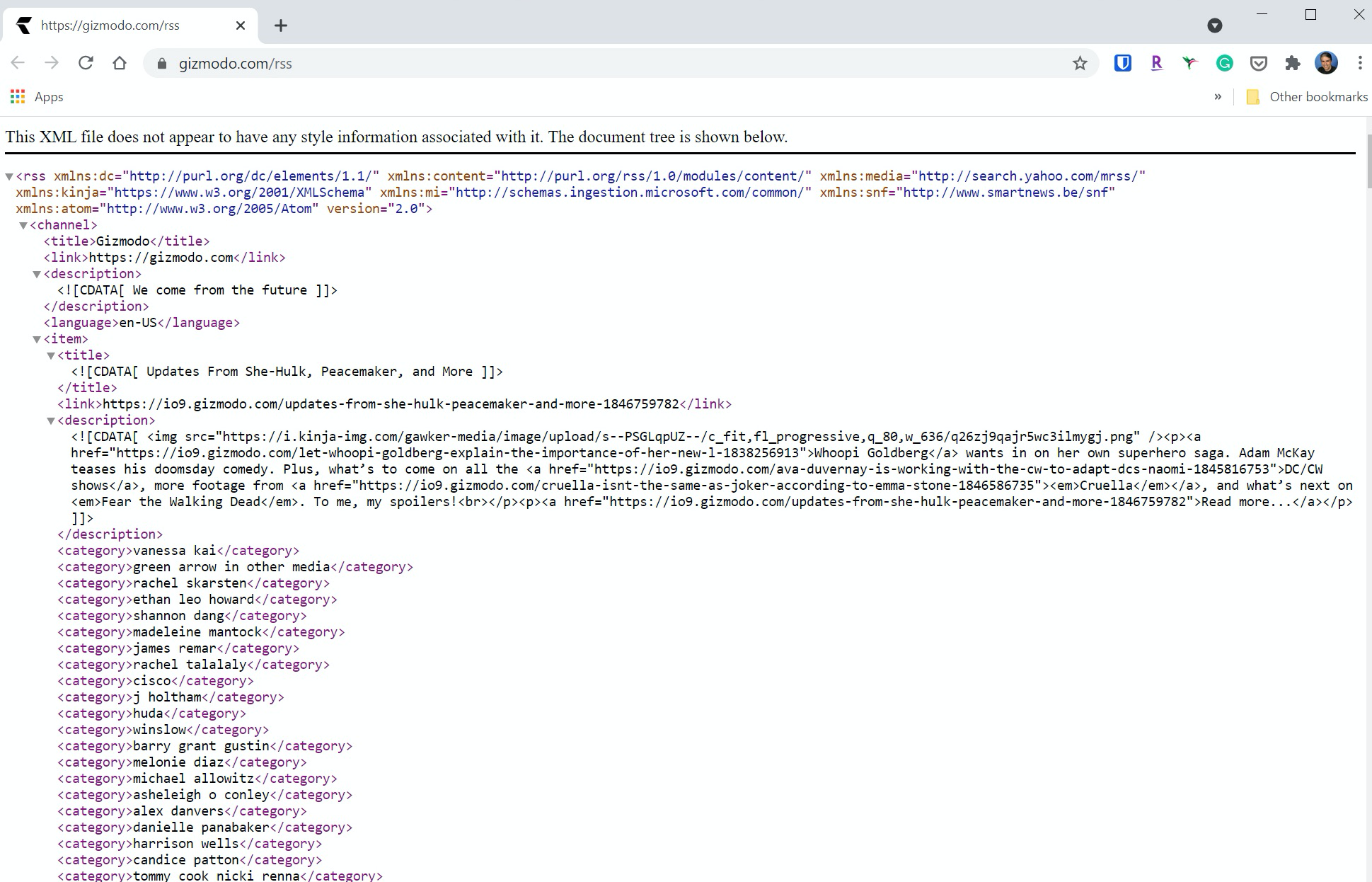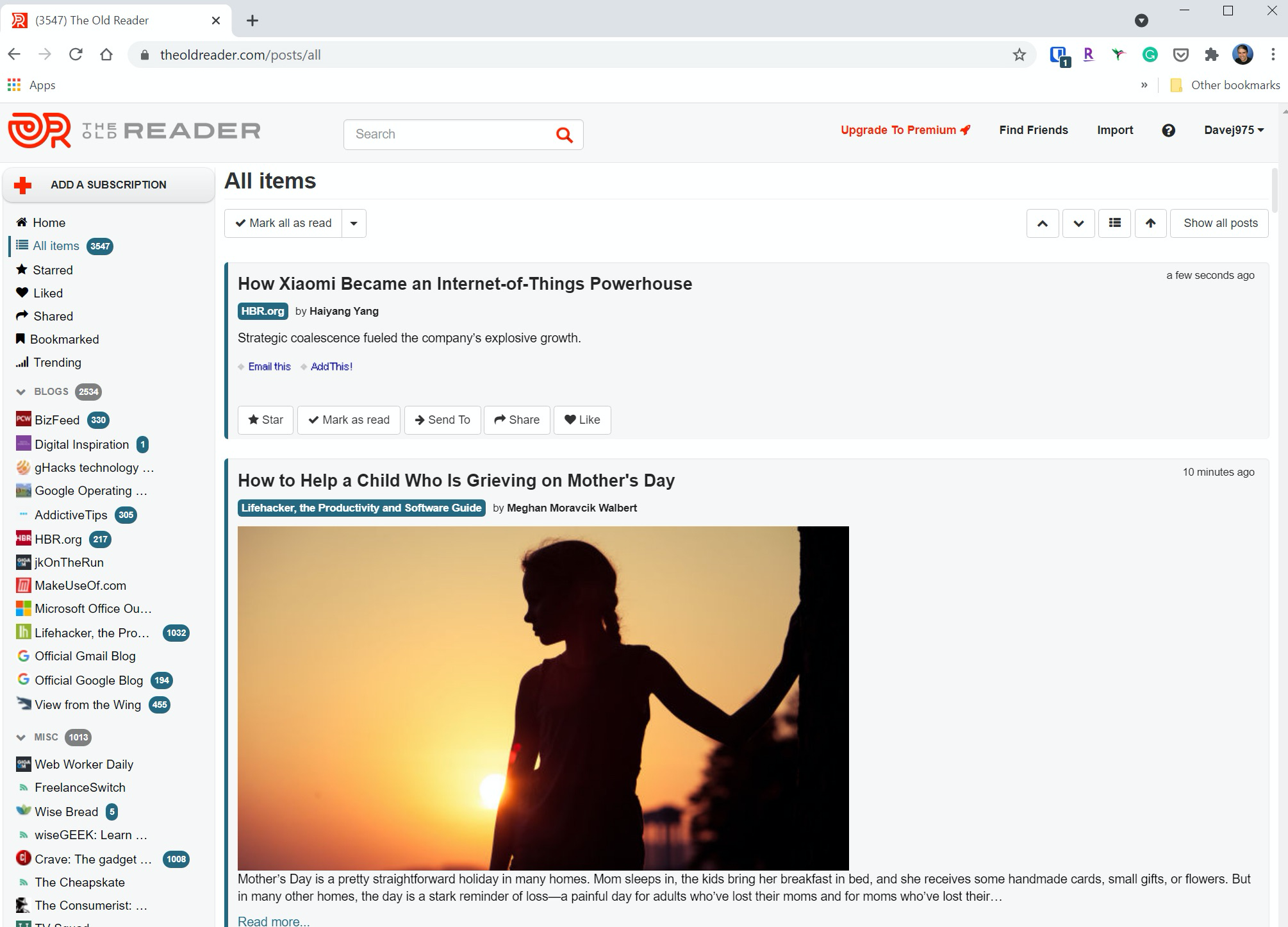
Tom Werner/Getty Images
- An RSS feed is a file that contains a summary of updates from a website, often in the form of a list of articles with links.
- RSS stands for Really Simple Syndication, and it offers an easy way to stay up to date on new content from websites you care about.
- You can read an RSS feed using a program or website called an RSS reader.
- Visit Insider's Tech Reference library for more stories.
While not as popular as it once was, RSS is still used by many people to stay informed about news, podcasts, and other information online. RSS – which stands for "Really Simple Syndication" – is a protocol that provides a standard method for websites to publish updates that anyone can see by displaying them in a program or website called an RSS reader.
What is an RSS feed?
Fundamentally, RSS is simply an XML text file. It's created by a website publisher and contains a running list of articles or other content published by the site, with the newest entry always at the top of the list. Each entry contains details like the article's title, description, and link to the content.
RSS feeds are published and updated in real time, so if you subscribe to a site's RSS feed, you'll always have access to the newest published content. That can be handy for news sites and podcasts that are frequently updated.

Dave Johnson/Insider
What to know about RSS readers
Because an RSS feed is a text file that contains a stream of article descriptions and links, it isn't designed to be read or used directly by you. Instead, users rely on a program called an RSS reader. This is a simple program that reads the RSS feed and displays the list of articles in a way that makes them easy to browse.
Many RSS readers can display a single unified view that aggregates content from all the websites you have subscribed to in chronological order – sort of like the way a unified inbox shows email from multiple accounts at once – or you can browse each website individually.

Dave Johnson/Insider
RSS readers are used to aggregate news. Users can subscribe to RSS feeds from the websites and sources of interest to them, and use an RSS reader to scan headlines and read articles from a variety of sources. This is less common today because many people tend to use social media to aggregate news, though it's less efficient because social media platforms use proprietary algorithms to determine what headlines users see. With RSS, you see everything that's published by the sources you subscribe to.
There are quite a number of RSS reader programs to choose from. Some are free, while others are paid programs that you need to purchase or subscribe to.
